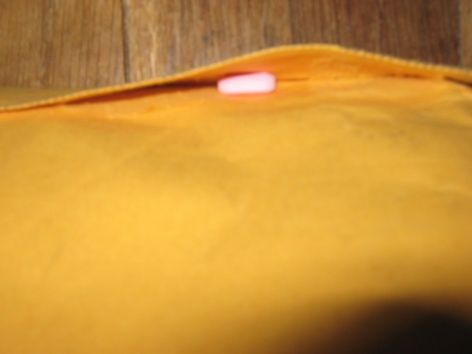One of the difficulties in controlling contraband lies in discovering specific unusual uses of everyday items. For example, the padded envelope is designed to protect fragile items in the mail. However, with a little help from outside sources, offenders can have a variety of illegal goods and dangerous items mailed in using the common padded envelope.
Here’s pictured a run-of-the-mill padded envelope. To most, it does not look sinister. Yet, this is an effective contraband vessel.
With a little well-placed tape or glue, narcotics of any variety can be placed in the seam. Because of the padding, the drug is not easy to detect.

The padded envelope is especially good for concealing flat items. Money, of course, is forbidden in its traditional form in most facilities. However, as the picture shows, this rule is easily circumvented.

The body of the padding can also hide bulkier items such as the pill pictured. Though the pill in the photograph is a harmless, over-the-counter variety, just imagine what else could be sent into a facility with this method.
I believe that the problem lies in volume. That is to say, due to the massive amount of mail that comes into a facility every day, it is likely that some contraband will make it into institution through padded envelopes. Of course, mailroom policies vary. And there are always a number of factors in day to day operations that may prohibit dangerous items from being snuck in through ordinary padded envelopes. Some facilities may not allow prisoners to possess these envelopes.
Utilizing the padded envelope to sneak contraband inside the facility is really not a new trick. Also, many staff are aware of this method. Still, not all staff have encountered this. In the end, basic awareness of the smuggling method is one of the foundation tools that helps keep our facilities safe.




